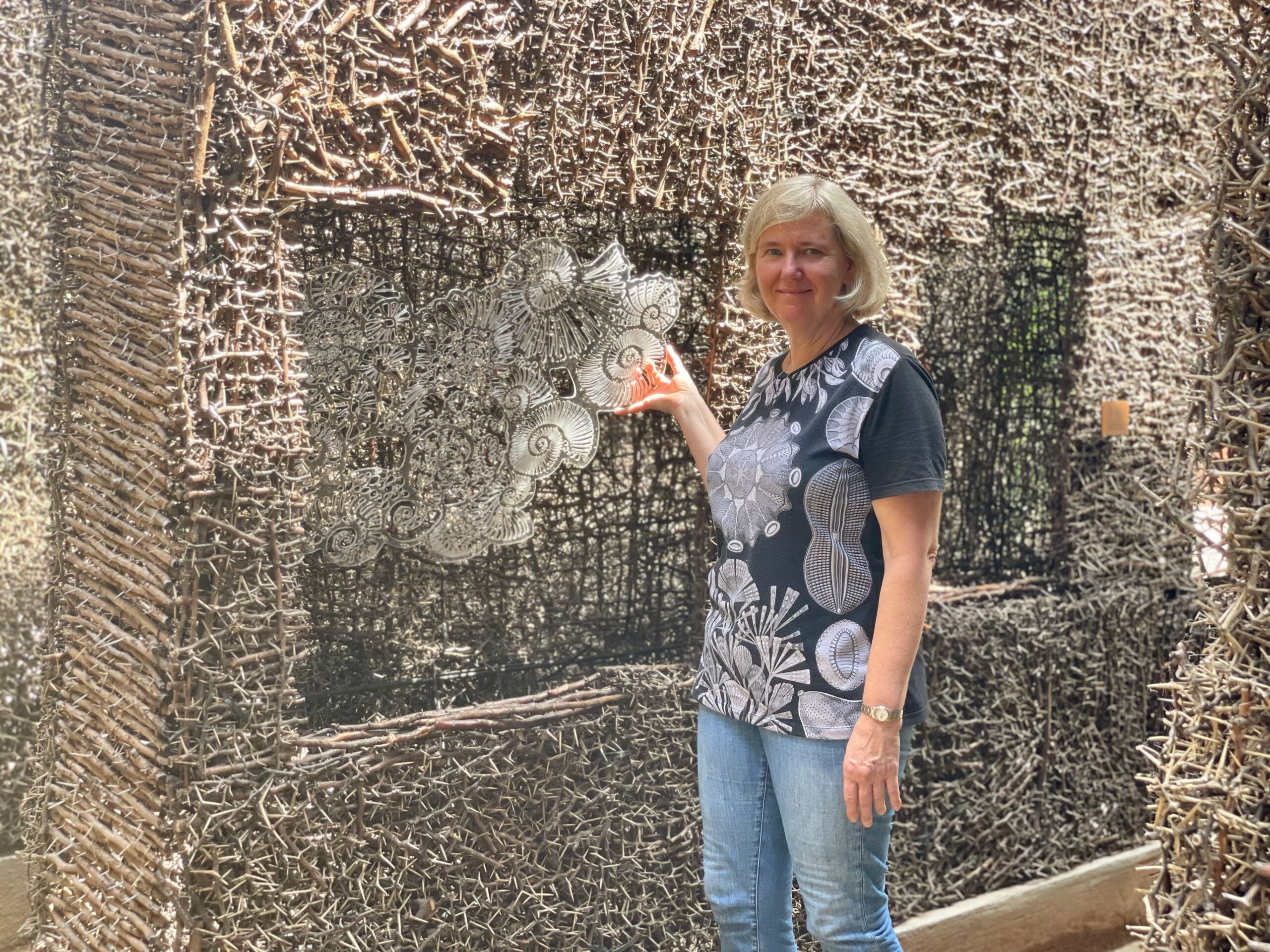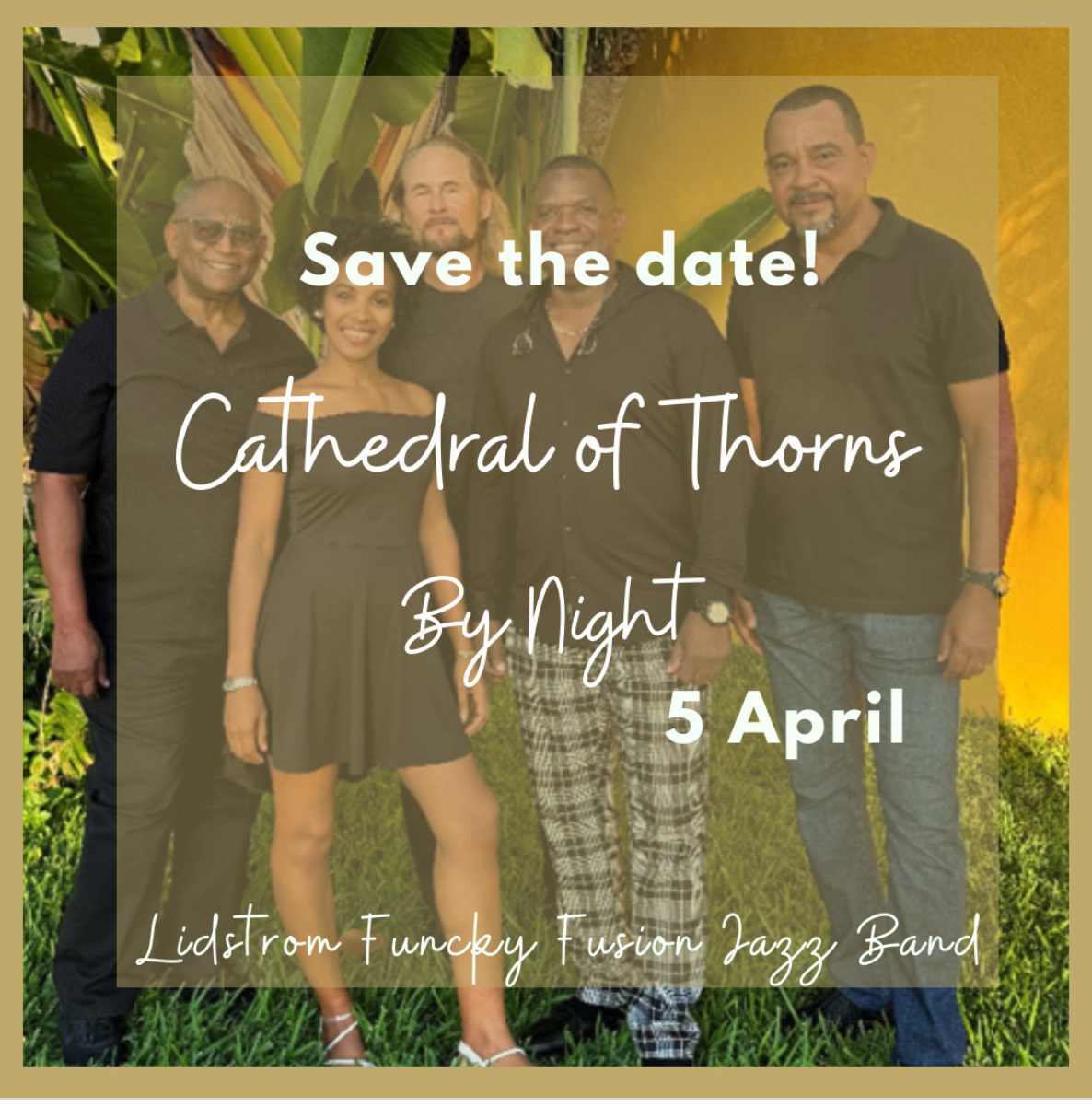
Eveline Kolijn
Written by: Marlous Vlasblom-Molendijk
Made possible by the Prins Bernhard Cultuurfonds Caribisch Gebied
This artist with a great interest in microbiology bridges the gap between nature and art in an inspiring way. The art of Eveline Kolijn is in alignment with Aristotle’s statement: “Educating the mind, without educating the heart, is no education at all”. In this quote, Kolijn acknowledges the importance of art and creativity needed in the present day to bring about expanded thinking about the natural world. The Cathedral of Thorns was built along the same line of this philosophy.
The work of art by Kolijn that is exhibited in the cathedral is called Ammonite Aria and is made of laser cut plexiglass: Island life is a continuous dynamic between sea and land. We also observe this through geological time. Ammonites are species of floating shells that lived in the sea millions of years ago. They do not exist anymore and fossilized into stone, to become part of the land. From Sea to Land. Land, that feeds trees. Trees, like the thorny Wabi in Curaçao.
“I am an extremely organized person. That is one of the reason why I became a graphic artist, I think. As a graphic artist you are bound to the rules and limits of your technique. From the age of 10 to 15 I lived in Curaçao. This was a very formative period in my development. I went to the Peter Stuyvesant College and I wanted to be a marine biologist or go to art school. It ended up being neither of those at the time. My father worked for Shell and was transferred back to the Netherlands, I could no longer do my exam year in Curaçao. At that time I was awfully homesick for the island. Never before had I lived in the Netherlands. Before we lived in Curaçao, we lived in Venezuela. This means that I have always been close to the sea. That largely explains my great interest and love for biology. Seeing the patterns and shapes in shells fascinates me and that is why I still have a large amount of patterned elements in my work.
In the end I studied anthropology and got married to my Dutch husband. First we lived in Australia and eventually we emigrated to Canada, where we still live today. In Canada, when I was older and even had children, I ended up going to art academy. That was the moment I decided that I am an artist.
My parents eventually returned to Curaçao and have lived here for quite some time now. Between my departure to the Netherlands and my first return to Curaçao was a gap of 15 years. Now I return to the island more often. What I saw when I came back has been a huge emotional shock to me. I saw with my own eyes what had changed on the reefs in that time; Few sea urchins, much less corals, the fish stock has decreased. This led to reading about climate change and the changes in the sea. An entire new ecosystem is developed with no corals, considerably less fish, lots of jellyfish and a lot of algae. Compared to the entire Caribbean, the condition of the corals in Curaçao and even more so in Bonaire is still comparatively good. This has been the main reason why the state of the oceans has become a great source of inspiration in my art. At home in Canada, my current living environment; the Rocky Mountains, I am a real odd person to create art about the ocean, there is no sea to be seen.
To raise people’s awareness about this issue, I have created a print portfolio just before the pandemic year. It is a print portfolio about the sea with science incorporated into it. There are a total of 11 prints made by graphic artists from around the world. For the project, 11 international graphic artists were paired with 11 biologists. The printmaker was tasked with creating an image inspired by the biologist’s research topic, and the biologist writes a page-long text on the subject. This collaboration between graphic artists and biologists makes this an unique portfolio, a wonderful project. I have also written several articles on art and microbiology myself and have been asked to create an image for and cover about evolution patterns in biology.
I create art that speaks to emotion. You can theoretically know and learn everything, but if it does not appeal to you emotionally, it is not enough. My art speaks about all environmental issues, the environment and how we are connected to The Web of Life. This connection is a combination of knowing, understanding and feeling. As an example: Did you know that plankton in the sea generates no less than half or our oxygen in the atmosphere? In fact, every second breath you take is made possible by microorganisms in the sea.”
